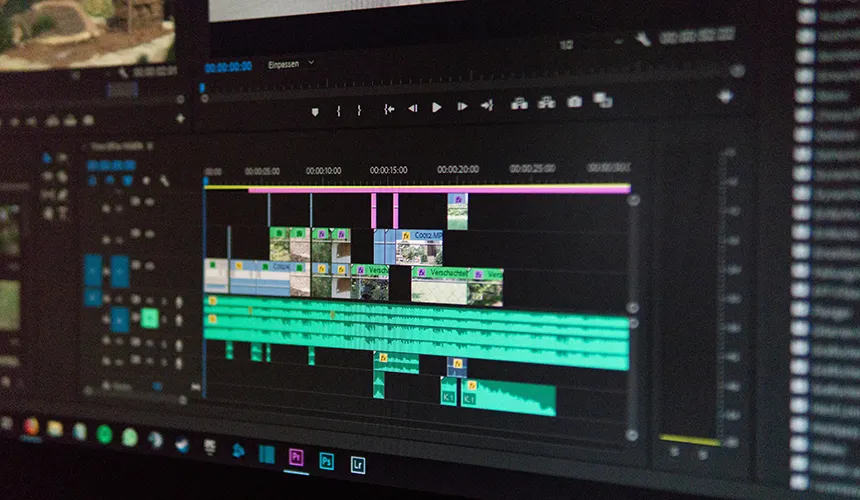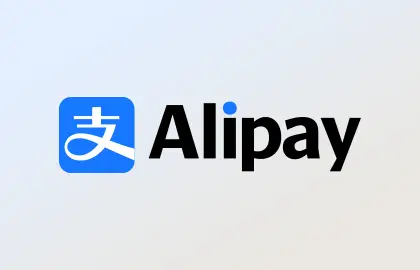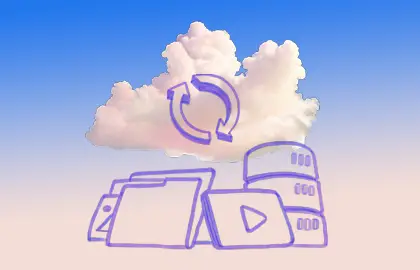How to send large video files: Easy methods
Video content is becoming a major part of the internet. By 2024, it's expected to make up 85% of online traffic. Whether it's a video for family or a professional project, big files are a challenge. Most email services like Gmail can only send files up to 25 MB. This is way too small for large videos. Finding ways to send big files is key for sharing stories and working together smoothly.
There are many ways to share big videos, from cloud storage to making files smaller. Finding the right way to send these files saves time and keeps your video looking good when it arrives. Google Drive offers 15 GB of storage for free, and OneDrive gives you 5 GB. For even bigger files, services like WeTransfer and Dropbox let you send over 2 GB.
In the next sections, we'll look at the best ways to share big video files easily. We'll help you send your large videos without any problems. Learn about these tools for a better way to share your videos.

Key Takeaways
- Gmail and other email services often have a 25 MB file size limit for attachments, necessitating alternative methods for large files.
- Google Drive provides 15 GB of free storage, making it an excellent option for large file transfers.
- WeTransfer allows users to send up to 2 GB of content for free.
Challenges of sending large video files
Sharing large video files is tough for many people. One big issue is the sharing limits on different platforms. For example, you can't send a video over 25 MB through email, which is hard when sharing high-definition videos. Gmail has this same 25 MB limit, making it tough to share big videos without losing quality.
Because of these limits, email isn't good for big videos. People have to use other ways to share, like cloud storage. Google Drive gives you 15 GB for free, which helps, but very large videos might need a paid plan. Dropbox offers up to 2 GB for free, and OneDrive gives 5 GB. But these options still might not be enough for big videos. Finding good ways to share big files, beyond email, is necessary.
Email storage space is another issue with big videos. They take up a lot of room, filling up your inbox fast. iCloud's Mail Drop lets you send bigger files but only for 30 days. People look for ways to get around these issues while keeping their videos high quality. This shows how tough sharing files can be today.
The problems with email and other traditional ways show why we need new solutions. We need better ways to share high-quality videos without the limits we face now.
Using cloud storage solutions
Cloud storage solutions like Google Drive, Dropbox, and OneDrive are key for big video files. They offer easy uploads and sharing features. Now, let's look at what makes each service special.
Google Drive
Google Drive is great if you use Gmail, thanks to its seamless integration. With 15 GB free, it's perfect for many large files. Plus, sharing is easy with web links. Need to store lots of data from film shoots or backups? Google Drive can handle it with scalable options.
Dropbox
Dropbox is known for its simplicity, giving you 2 GB for free. Upgrading gives you more space, up to 5 TB for businesses. It's user-friendly, making uploading and sharing straightforward. Dropbox also keeps your data safe and accessible.
OneDrive
OneDrive gives you 5 GB for free and works well with Microsoft Office. It's easy to use across different devices. Need more space? It has plans for that. OneDrive is reliable, perfect for large video files.
| Service | Free Storage | Paid Storage Options |
|---|---|---|
| Google Drive | 15 GB | Varied plans over 15 GB |
| Dropbox | 2 GB | Plus (2 TB), Professional (2 TB), Business (5 TB) |
| OneDrive | 5 GB | Varied plans over 5 GB |
Picking the right cloud service depends on your needs and what platform you like. Google Drive, Dropbox, and OneDrive all have something good to offer. They help with storing, sharing, and managing your data.
Utilizing free online services
Looking for a way to send big files for free? Online services can help. They let you upload big videos easily and quickly. You don't need to sign up or pay.
DriveUploader
DriveUploader allows easy sharing of large files to Google Drive with drag-and-drop. It's awesome for those getting big files often. This tool is great for smooth uploads and works well with Google Drive.
WeTransfer
WeTransfer is great for sending files up to 2 GB with no need to register. It's simple to use, making it ideal for quick file sharing. If you need to share big videos easily, this is your go-to.
Jumpshare
Jumpshare lets you send up to 250 MB of files for free. It's super user-friendly, thanks to a desktop icon for uploads and shareable links. It's perfect for quick and frequent file sharing.
Platforms like WeTransfer, Jumpshare, and DriveUploader make sending big videos easy and free. They are simple to use and help everyone share files effectively and quickly.
How to send large video files using compression techniques
Sending big video files can be hard, especially with email size limits. A good fix is using compression, which makes files smaller so sharing is easier. 7-Zip is a great tool for this. It supports many compression formats.
7-Zip compression
7-Zip makes big files much smaller. This helps a lot when you're sending big videos by email or online. Google Drivelets you store up to 15GB for free. Compressing files means you can save more stuff.
Besides making files smaller, 7-Zip keeps your videos looking good. It compresses without losing quality. You can also add a password to keep your files safe. Email services like Gmail and Yahoo! Mail limit attachments to 25MB. So, compressing is key to sending them successfully.
Here's a quick comparison of popular email services and their maximum attachment sizes:
| Email Service | Max Attachment Size |
|---|---|
| Gmail | 25 MB |
| Yahoo! Mail | 25 MB |
| AOL Mail | 25 MB |
| Microsoft Outlook | 20 MB |
| Apple iCloud Mail | 20 MB |
| Zoho Mail | 20 MB |
| GMX Mail | 50 MB |
Using 7-Zip for compression respects email size limits and makes sending files easier. With files like a 4K video of twelve minutes taking 1 GB, compression is super helpful. 7-Zip helps us share files easily and keep our communications smooth.
Transferring large files with FTP and SFTP
In today’s digital world, it's key to move big files both fast and safely. If you are handling large videos or huge datasets, knowing the difference between FTP and SFTP can really help your work process.
FTP with FileZilla
Since 1971, when Abhay Bhushan Pandey created it at MIT, FTP has been vital for moving data. It uses TCP to send packets between a server and a client. It also has two channels: one for commands and another for the files and file lists. FileZilla makes FTP easy, allowing you to drag and drop files. It also handles both active and passive modes well, improving the experience greatly. But, FTP can struggle with really big files. For example, it might stop working after sending 25 MB of a 4.25 GB .avi file. Still, with good software like FileZilla, FTP is a useful tool for transferring files.
SFTP for secure transfers
SFTP adds a secure layer to FTP by using SSH encryption. It's perfect for businesses that need to keep file transfers safe. With SFTP, the data is encrypted, which protects important information while it's being sent. Companies big and small can use SFTP's secure way of sending data, especially when sharing files with others or using cloud storage. It comes with benefits like easy-to-follow naming, a clear directory layout, and strong tracking features. Also, by using SFTP in your various work processes, you can make things more efficient. It helps with automating and making large file uploads and secure file sending smoother.
Sharing large video files with video hosting sites
Video hosting sites are a great way to share big videos without a hitch. They come with awesome tools like making files smaller and letting you control who sees your videos. YouTube and Vimeo are two big names that help you do this easily.
YouTube
YouTube is a giant when it comes to sharing videos. It's great for uploading high-quality videos and is loved by many. YouTube compresses videos so they upload fast and play smoothly, even if your internet isn't the fastest. But, this might lower the video quality a bit. Also, you can choose who gets to watch your videos, keeping them private if you want. Plus, if you're making cool stuff, YouTube lets you earn money from your videos. That makes it not just for sharing but also for earning.
Vimeo
Vimeo is all about high-quality video hosting. It keeps your videos looking sharp, which is why those who care a lot about quality love it. Vimeo also has easy-to-use privacy settings giving you lots of control over who watches and downloads your videos. It's perfect for both sharing with the world and keeping things private. Plus, creative pros dig Vimeo for its fancy tools and analytics. These features help understand how people engage with your videos.
| Feature | YouTube | Vimeo |
|---|---|---|
| Compression | High, may affect quality | Moderate, retains quality |
| Privacy Controls | Robust | Extensive and user-friendly |
| Monetization | Available | Limited, more for professionals |
| Customization Tools | Basic | Advanced |
Direct device-to-device sharing methods
In today's world, sharing large video files can be tough because they're big and internet can be slow. But, you can make it easier by using direct transfers from one device to another. One great way is through a USB flash drive. These are simple to use and don't need the internet to work.
USB flash drives have a lot of storage, from 2 GB to X TB. This means they have enough space for big video files. They are easy to use. Just plug them in, and you're ready to share your files, no internet needed.
Another way to share files directly is with Bluetooth and NFC. Bluetooth is good for small files even though it's a bit slow. It's free and works between many devices. NFC is faster and great for sending big files if your devices can use it.
If you need to send files without size limits, try apps like AirDroid Personal and Send Anywhere. AirDroid lets you send endless files over Wi-Fi without worrying about how big they are. Send Anywhere is super secure with 256-bit encryption, so your files are safe when you share them.
- AirDroid Personal: Unlimited transfers, no size limits over Wi-Fi, high user satisfaction.
- Send Anywhere: 256-bit encryption, secure file sharing.
- Bluetooth: Free, best for smaller files.
- NFC: Quick transfer speeds, ideal for large files.
- USB Flash Drive: Capacities from 2 GB to X TB, file sharing without internet.
"For seamless and secure file sharing without relying on internet services, these device-to-device transfer methods offer a practical and versatile solution."
| Method | Advantages | Disadvantages |
|---|---|---|
| USB Flash Drive | Large capacity, file sharing without internet | Physical access required |
| Bluetooth | Free, easy to use | Slower for large files |
| NFC | Fast transfers | Limited to compatible devices |
| AirDroid Personal | Unlimited transfers, no size limits | Requires Wi-Fi network |
| Send Anywhere | High security with encryption | Internet needed for remote transfers |
Conclusion
We've looked into many ways to share videos effectively, covering options for all your big file needs. Cloud services like Google Drive, Dropbox, and OneDrive fit right into daily work. Free online services like WeTransfer, Jumpshare, and DriveUploader make sharing digital content smooth and reliable.




